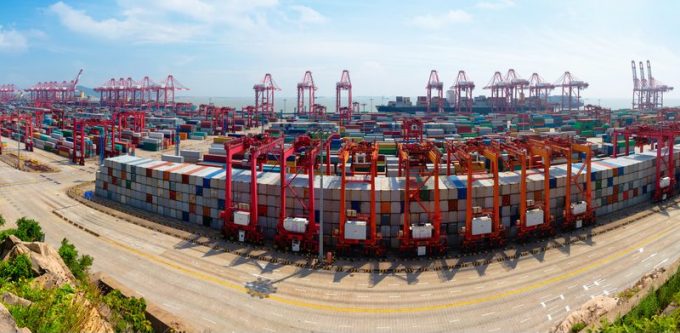The Trump administration’s erratic tariff policies have created fresh turmoil in the transpacific shipping market, despite recent efforts to ease tensions. While a 90-day moratorium on additional tariffs for U.S. imports—excluding those from China—was announced on April 8, the move has done little to stabilize cargo volumes or shipping rates.

On April 5, a 10% base tariff was imposed on all U.S. imports, with country-specific additions planned for April 9. However, President Trump’s subsequent announcement of a 90-day pause on these additional tariffs, coupled with exemptions for smartphones and consumer electronics, has left shippers and carriers navigating a landscape of uncertainty. China, meanwhile, faces a staggering 145% tariff on imports to the U.S., compounding the strain on transpacific trade.
According to analysts at Linerlytica, these policy shifts have failed to revive shipping volumes. Container bookings from China to the U.S. have plummeted by 30%-60%, while those from other Asian countries have contracted by 10%-20%. The upcoming Labor Day holidays in China and other Asian nations are expected to further reduce cargo volumes, even as carriers attempt to manage capacity by withdrawing services such as MSC’s Mustang, Premier Alliance’s PN4, and TS Lines’ AWC.
Market indicators reflect the downward pressure on rates. Last week, the Shanghai Containerized Freight Index reported a 5% drop in Shanghai-to-U.S. West Coast rates to $2,202 per 40-foot container, and a 2% decline in Shanghai-to-U.S. East Coast rates to $3,226 per 40-foot container. Linerlytica warns that these rates could fall below $2,000 in the coming weeks as carriers continue to lower prices to attract shrinking cargo volumes.
“Further turbulence is inevitable as carriers adjust rates downward to cope with the decline in Chinese exports,” said the consultancy. While rates from Southeast Asia remain relatively stable due to expectations of a cargo rebound, they are insufficient to offset the steep drop in Chinese shipments. Contract rate negotiations have been put on hold until clarity emerges.
Despite exemptions for consumer electronics, approximately 30%-40% of transpacific container imports remain stalled by existing tariffs. Broader geopolitical tensions continue to shape the landscape, with a recent Barclays Bank report highlighting the U.S. shift from a rules-based to a deals-based international order. The report notes that U.S. policymakers have moved from “strategic engagement” to “strategic competition” with China, driven by the latter’s rapid growth in economic, technological, and military power.
China’s investment in research and development, now nearing U.S. levels, has fueled its ability to develop both traditional manufacturing and next-generation dual-use technologies. In 2020, the U.S. spent nearly $700 billion on R&D, while China allocated approximately $550 billion. These investments, Barclays argues, have created an ecosystem that challenges U.S. dominance in critical sectors.
For the transpacific shipping industry, the combination of tariff volatility, shifting trade patterns, and geopolitical rivalry promises continued instability. As carriers and shippers brace for further market adjustments, the path to stability remains unclear.
